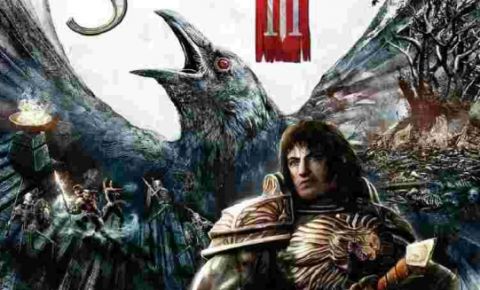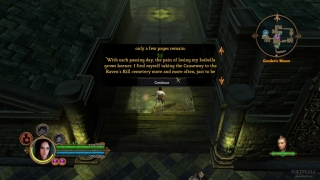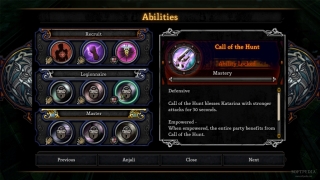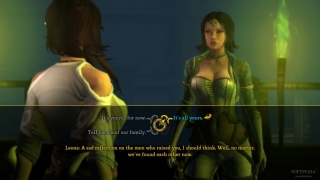One of the most exciting ideas embedded into Dungeon Siege III is the quick switching between battle stances for all the characters. The idea is that regardless of who you play there are situations when group based close quarters is more important and others when long range one on one combat is the main concern. A player has to judge the fight he is in and determine which stances he needs to use and when and the battle flows in interesting ways.
Unfortunately this is one of the few ideas in Dungeon Siege III that feels different and exciting and the rest of the experience rarely rises above the level of a competent yet unimpressive hack and slash.
Story
At its core Dungeon Siege III is a game about fighting bad people (well, mostly bad creatures), looting their corpses, tweaking tactics and then taking on even bigger foes. Yes, there's a clear narrative that the Obsidian team has put in the game, compete with a lot of side quests and a lot of backstory, but even though I usually love the writing done by Obsidian I was unable to follow it all the way through.
I found myself clicking as fast as I could through the dialog screens and choosing the most obvious options and after the first quarter of the game I also gave up on reading the messages that pop up throughout the world and the lore entries in the Journal.
It's not that the story is actually bad and there are some nice twists linked to the 10th Legion and to the way the world is being reshaped by destruction and by the evil forces but the focus is just elsewhere.
Gameplay
There are two actions that define Dungeon Siege III in terms of gameplay: click to kill enemies and click to pick up loot. There's a third that's also required but, as detailed above, less engaging: click to get through conversations.
Dungeons Siege III has a well implemented combat system that is pretty different depending on the used character and on the choices made by leveling him up. I primarily played with Katarina, which engages with rifles, shotguns and sidearms, and getting through the combat meant a combination or judicious use of special powers and constant movement.
The two combat modes that the characters have and can instantly switch in and out off mean that there are no situations that become impossible and create a nice balance before going up close and personal with mobs and snipping from away, drawing individual enemies in.
The boss fights can feel a bit cheap at times, especially when it comes to the ones who can spawn reinforcements and just swamp the player with numbers, draining his reserves of life and magic and not offering any chance to replenish them.
Looting is satisfying and it's easy to quickly see what each object adds to a character and swap them in an out. The color code and the prices always point the player to the best item he can equip in one slot and there's even an option to turn anything straight up to gold to create inventory space.
The joy of looting is a bit dampened by the weird mechanics that power it: players can simply walk over gold to pick it up and the same will happen with green and blue orbs that replenish health and magic. But for objects players have to carefully position themselves and press E, which makes the whole business more complicated than it should be.
This game is perfectly linear and that could be fine as long as the quests were well placed in the world but Obsidian does the mistake of often sending the player back quite a way in order to do some side quest. Sure, they can be ignored but the joy of this kind of hack and slash experience is to fight as many enemies and get as much loot as possible, which naturally means doing most if not all the side quests.
Character development is also deeper than it initially looks, based around Abilities that themselves spawn Proficiencies and then a separate Talent tab. There's enough here to create some replay value, which is further enhanced by the choice of four possible character.
Graphics and audio
Dungeon Siege III is not actually a very beautiful game but the presentation clearly matches the theme of the experience and, to some extent, the way previous entries in the series felt. The spell effects and and the various magics in the game looks very good and there are probably some beautiful vistas, which are always often obscured by the way the camera is positioned.
There's also a lack of detail in the character models when viewed from above and the short dialog scenes can also feel a little empty, with no movement at all and with the blank stare of the characters forcing me to click my way through the lines as fast as I can.
The sound design is nothing to praise but also lacks any devastating flaws. The music is a pleasant companion during the long battles and the characters are voiced by competent people, even if at times they seem to lack any interest at all in what is happening. The accents are also all over the place and the game fails to actually establish a presence in terms of sound.
This is a failure because Obsidian is often at its best when trying to establish the space for a game and have managed to do so in both original titles, like Alpha Protocol, and games based on licenses, like Fallout: New Vegas.
Multiplayer
It's very easy to fire up Dungeon Siege III and then use Steam to get other players into the game and begin a cooperative run through the game. All the content is scaled to the fact that human players joining forces but I always felt that the game was easier with all people contributing, probably because of how much teamwork can factor into the fight.
There's a lot of space in the game for complex tactics, like getting enemies in a place where another gamer can better take care of them but I have found that most of my buddies seem to revert back to single player habits and kill mostly on their own and focus on the others when they needed help or to be revived.
The only problem is that a cooperative game began by one player is only saved for him, meaning that the other three gamers get only bragging rights and the joy of taking out monsters for their own effort.
The best part of the game is the actual combat, with its mix of frantic action and strategic choices when it comes to special power deployment but it too could have used a little bit of extra depth. The weakest element is the bad camera, which can make even good battles a chore and often leads to unnecessary death. Dungeon Siege III is a video game that will not break into any Best of 2011 charts and will probably also fail to light the sales charts ablaze but the team at Obsidian has worked carefully and managed to create a solid hack and slash experience that could have done much more on the story front and could have benefited from a better port to the PC.
The Good
The Bad
Conclusion
 14 DAY TRIAL //
14 DAY TRIAL // 






















